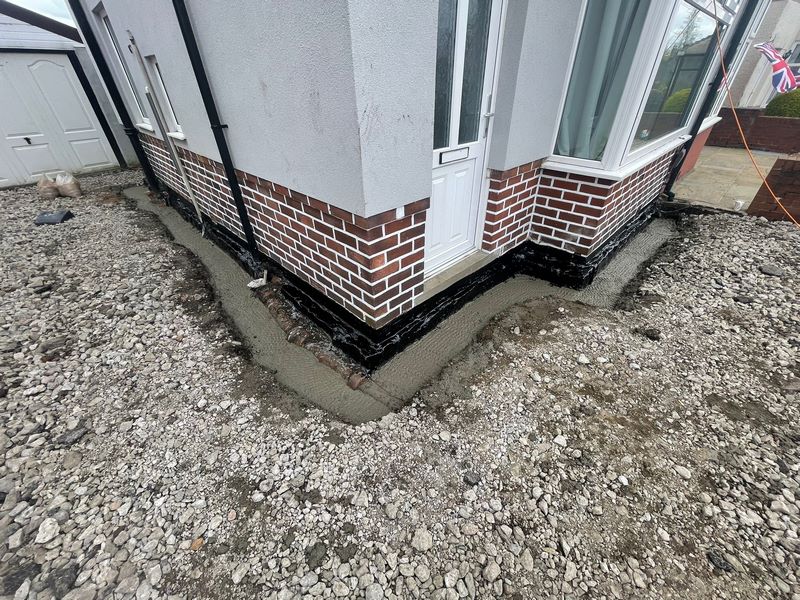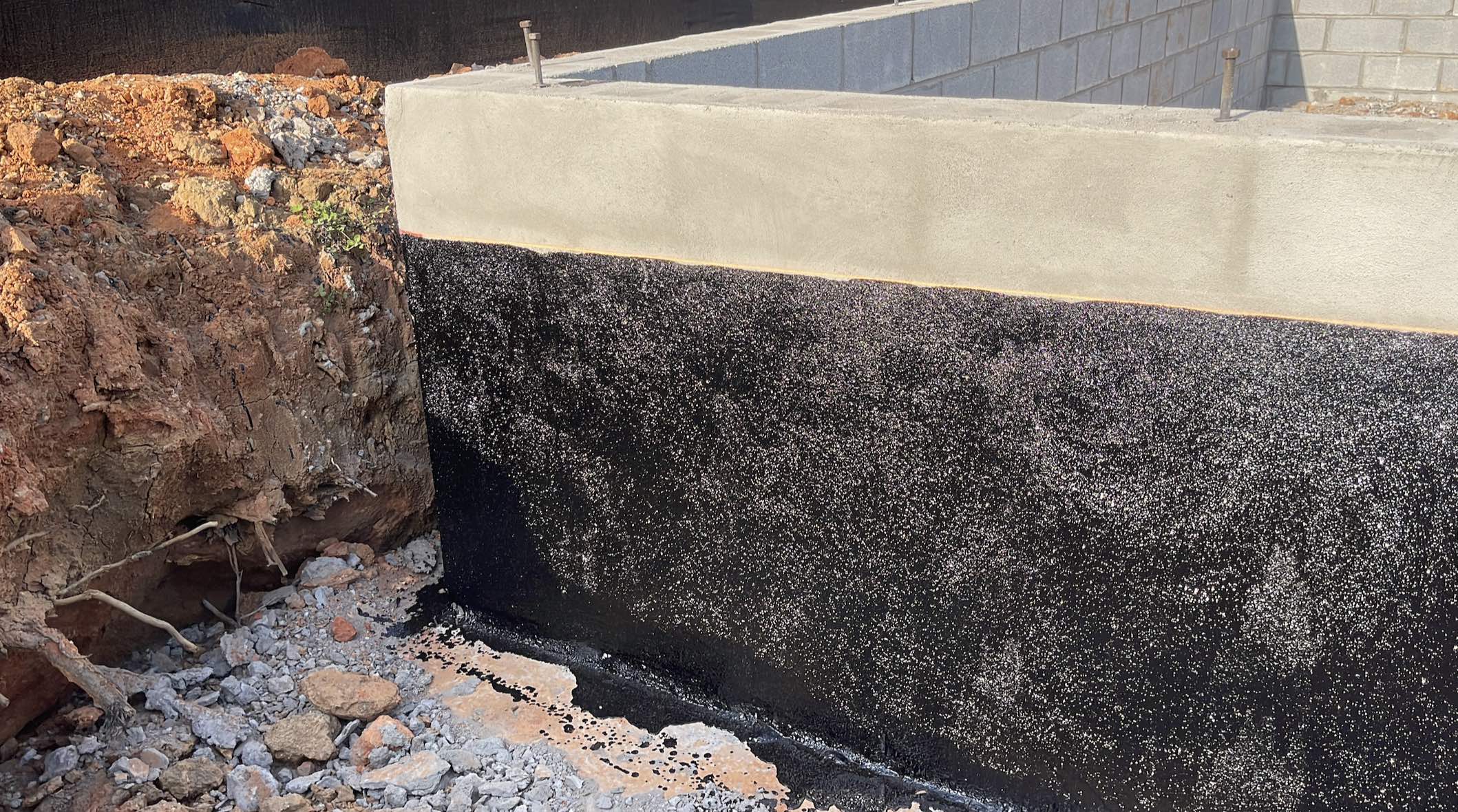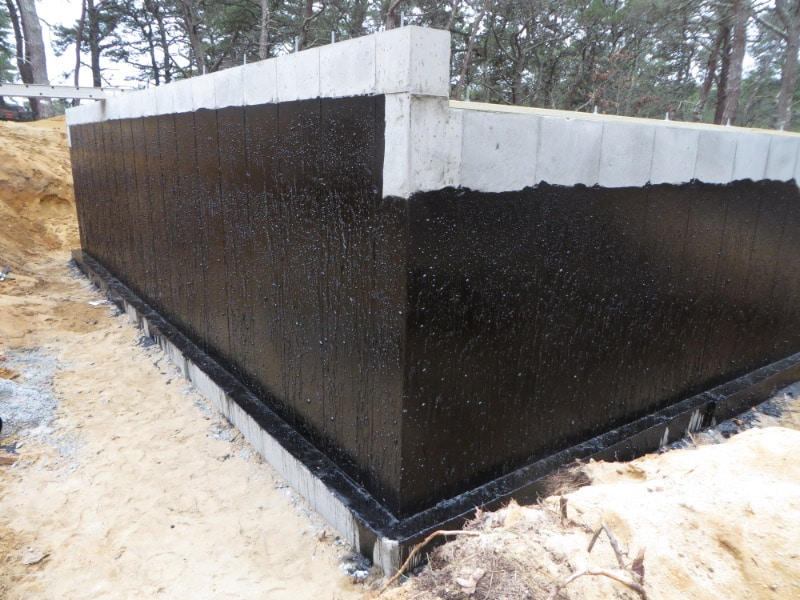Step-by-step guide for damp specialist newcastle to identify moisture issues early
Step-by-step guide for damp specialist newcastle to identify moisture issues early
Blog Article
Exploring the Numerous Methods and Solutions for Effective Damp Proofing
Dampness in structures poses considerable challenges to both structural honesty and indoor air quality. Different techniques and options have emerged to fight this pervasive concern. From traditional damp-proof membranes to innovative chemical treatments, each method offers unique advantages. Comprehending these choices is essential for effective dampness control. Picking the appropriate remedy depends on details building problems and demands, motivating further expedition right into the most efficient damp proofing strategies readily available.
Recognizing the Sources Of Moisture
Dampness can occur from numerous sources, recognizing these causes is vital for reliable remediation. Generally, moisture stems from three key resources: rising wet, penetrating wet, and condensation. Rising wet happens when groundwater takes a trip upwards via porous products, such as brick or stone, commonly because of an absence of an effective obstacle (damp proofing newcastle). Passing through damp is commonly triggered by exterior aspects, including roofing system leakages, faulty seamless gutters, or damaged wall surfaces, allowing water to penetrate a home. Condensation, on the various other hand, arises from excess dampness in the air, commonly exacerbated by poor air flow and temperature level differences, causing water beads developing on surface areas. Identifying these underlying issues is vital, as each type of wetness requires a tailored strategy for remediation. Proper assessment helps in identifying the most reliable solutions, eventually securing the architectural stability of a building and enhancing indoor air quality
Conventional Damp-Proof Membranes

Chemical Damp-Proofing Solutions
Chemical damp-proofing services supply a cutting-edge approach to avoiding wetness intrusion in buildings. These methods generally involve the application of fluid chemicals that permeate masonry and develop a barrier versus rising wet. Generally made use of chemicals consist of silanes, siloxanes, and various other water-repellent representatives that react with surface materials to create a hydrophobic layer.The application procedure generally calls for exploration holes into the walls, injecting the chemical remedy, and permitting it to treat. This method is particularly useful for older frameworks where conventional damp-proof membranes might be unwise. Furthermore, chemical damp-proofing can be less turbulent and extra economical than considerable renovation projects.While effective, these services rely on proper application and ecological problems for peak performance. Normal upkeep and monitoring are vital to ensure the long life of the damp-proofing treatment. On the whole, chemical damp-proofing represents a functional option for protecting structures against moisture-related damages
Dental Caries Wall Surface Building And Construction Methods
Dental caries wall building and construction strategies provide numerous advantages, specifically in moisture control and energy performance. By incorporating an air void between two layers of stonework, these wall surfaces effectively minimize water access while improving insulation. This combination not just protects structures from dampness yet additionally adds to reduced energy consumption.
Advantages of Cavity Wall Surfaces
When considering effective moist proofing techniques, the advantages of dental caries walls stick out plainly. Dental caries wall surfaces include 2 different layers, developing an air void that effectively decreases moisture penetration. This design reduces the danger of dampness, as the outer wall surface works as an obstacle against rain and water ingress. In addition, tooth cavity walls enhance thermal insulation, which contributes to power efficiency by decreasing heat loss. They also provide audio insulation, aiding to create a quieter indoor environment. Furthermore, the air gap permits ventilation, which assists in dampness control and minimizes the chance of mold and mildew development. These advantages not only enhance the overall convenience of a building but likewise add to its durability and architectural honesty.
Wetness Control Approaches
Reliable wetness control approaches are vital in tooth cavity wall surface building to ensure long-term protection versus wetness. One main approach involves the unification of weep openings, which help with water drain from the cavity, protecting against accumulation. In addition, using breathable membranes can assist take care of moisture degrees while permitting caught vapor to get away. Correct placement of insulation is likewise critical, as it ought to not block water drainage paths. Additionally, ensuring that the outer fallen leaves of the dental caries wall are constructed with waterproof products boosts total sturdiness. Regular maintenance checks are necessary to identify any blockages or damage early, protecting the framework's stability. Inevitably, a mix of these strategies creates a durable defense against wetness invasion in dental caries wall surfaces.
Insulation and Power Performance
Insulation plays an essential role in enhancing energy efficiency within cavity wall construction. By incorporating insulating materials, these walls develop a thermal obstacle that lessens warm loss and decreases energy consumption. Effective insulation not only helps keep a steady interior temperature level yet likewise reduces the risk of dampness, as it avoids condensation within the wall dental caries. Various techniques, such as using stiff foam boards or mineral woollen, can be utilized to achieve optimal insulation performance. Additionally, proper installment is necessary to assure that spaces and voids are reduced, which can otherwise endanger power effectiveness. Ultimately, a well-insulated dental caries wall contributes substantially to general sustainability and lowers home heating and cooling costs for house owners.
Exterior Damp Proofing Methods
Exterior damp proofing approaches are vital for securing structures from wetness seepage. 2 effective strategies include the application of water resistant membranes and the installation of French drains. These options assist mitigate water accumulation and maintain the honesty of structures.
Waterproof Membrane Layer Application
While different methods exist for stopping moisture ingress, the application of water-proof membranes continues to be an extremely reliable outside moist proofing technique. These membrane layers are typically made from materials such as polyethylene, rubber, or modified asphalt, offering a durable barrier against water infiltration. The installment process includes using the membrane layer to the exterior surfaces of structures or wall surfaces, making sure full protection to stop leakages. Proper here bond and securing at joints are crucial to optimizing effectiveness. Water resistant membranes can be applied in different types, consisting of fluid finishings and sheet membrane layers, permitting versatility based upon the certain demands of the structure. This technique not only protects structures from dampness yet additionally boosts their long life and architectural honesty.
French Drainpipe Installment
One reliable approach for managing groundwater and preventing wetness build-up around a structure's foundation is the installment of a French drainpipe. This drain system includes a trench filled with crushed rock and a perforated pipeline that reroutes surface water far from the structure. Proper installation calls for cautious planning, ensuring that the drainpipe slopes far from the structure to help with perfect water flow. In addition, the place of the drainpipe is crucial; it ought to be positioned in locations vulnerable to merging or excess dampness. Normal upkeep, including clearing particles from the gravel and guaranteeing the pipeline continues to be unhampered, is crucial for long-lasting effectiveness. Ultimately, a well-installed French drainpipe can considerably decrease the threat of water-related problems in foundations and cellars.
Inside Waterproofing Strategies
Inside waterproofing methods are important for securing a building's inside from moisture seepage and prospective water damage. These methods typically include the application of specific materials and methods created to create a moisture barrier within the framework. One usual strategy is using water-proof finishings or sealers on walls and floors, which stop dampness from penetrating surfaces.Additionally, setting up indoor water drainage systems, such as sump pumps, can properly handle water build-up in basements and creep spaces. One more approach involves the use of vapor obstacles, which are mounted to prevent dampness movement from the ground into living spaces.Moreover, resolving any fractures or voids in walls or foundations with proper sealers guarantees a thorough defense against water breach. By implementing these interior waterproofing methods, homeowner can greatly decrease the threat of mold and mildew growth, architectural damage, and other moisture-related issues. Correct implementation of these strategies is crucial for lasting protection and building stability.
Normal Maintenance and Assessment Practices
Regular upkeep and examination practices are important for assuring the long-lasting efficiency of damp proofing options in any kind of building. Regular checks allow residential property owners to identify very early indicators of dampness intrusion, such as peeling paint, mold and mildew development, and musty smells. These indicators can signal underlying problems that require immediate attention.Inspections should be performed at least yearly, concentrating on susceptible locations like cellars, crawl spaces, and outside walls. Throughout these evaluations, residential or commercial property proprietors need to analyze sealants, water drainage systems, and air flow to confirm they operate correctly.Additionally, keeping downspouts and seamless gutters is vital, as stopped up systems can result in water buildup near the structure. Implementing a routine maintenance schedule, in addition to timely repair services, can significantly expand the lifespan of wet proofing steps and safeguard the structural honesty of the structure. Aggressive measures inevitably contribute to the total health and wellness of the living setting.
Often Asked Inquiries
For How Long Does Damp Proofing Normally Last?
The duration of damp proofing efficiency varies, commonly lasting in between 20 to 50 years. Factors such as application top quality, environmental problems, and upkeep practices greatly influence the durability of the moist proofing therapy.

Can I Damp Proof My Home Myself?
The individual considered the feasibility of do it yourself damp proofing. With proper study and the best products, it is possible. Nonetheless, they also identified the relevance of expert assistance to guarantee durable efficiency and avoid future issues.
What Are the Signs of Inefficient Damp Proofing?
Indicators of ineffective moist proofing consist of persistent stuffy odors, noticeable mold growth, peeling off paint, damp patches on wall surfaces, and wood degeneration - mould removal newcastle. Homeowners must deal with these concerns immediately to stop more damage and health and wellness concerns
Does Damp Proofing Affect Indoor Air High Quality?

Exactly How Much Does Professional Damp Proofing Expense?
Specialist damp proofing expenses differ considerably, commonly varying from $1,000 to $5,000 depending upon the residential or commercial property's dimension, the level of the damp problem, and selected approaches. Each situation needs a customized analysis for accurate pricing. Frequently, wetness stems from three main sources: climbing wet, penetrating damp, and condensation. When thinking about efficient wet proofing approaches, the benefits of cavity walls stand out prominently. Outside wet proofing approaches are essential for securing structures from dampness seepage. While different methods exist for stopping moisture ingress, the application of water resistant membranes stays an extremely efficient external damp proofing technique. Indicators of inefficient wet proofing include consistent stuffy odors, noticeable mold and mildew growth, peeling paint, wet spots on walls, and wood decay.
Report this page